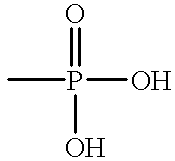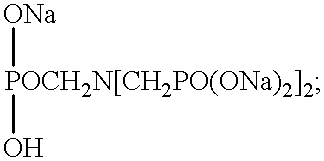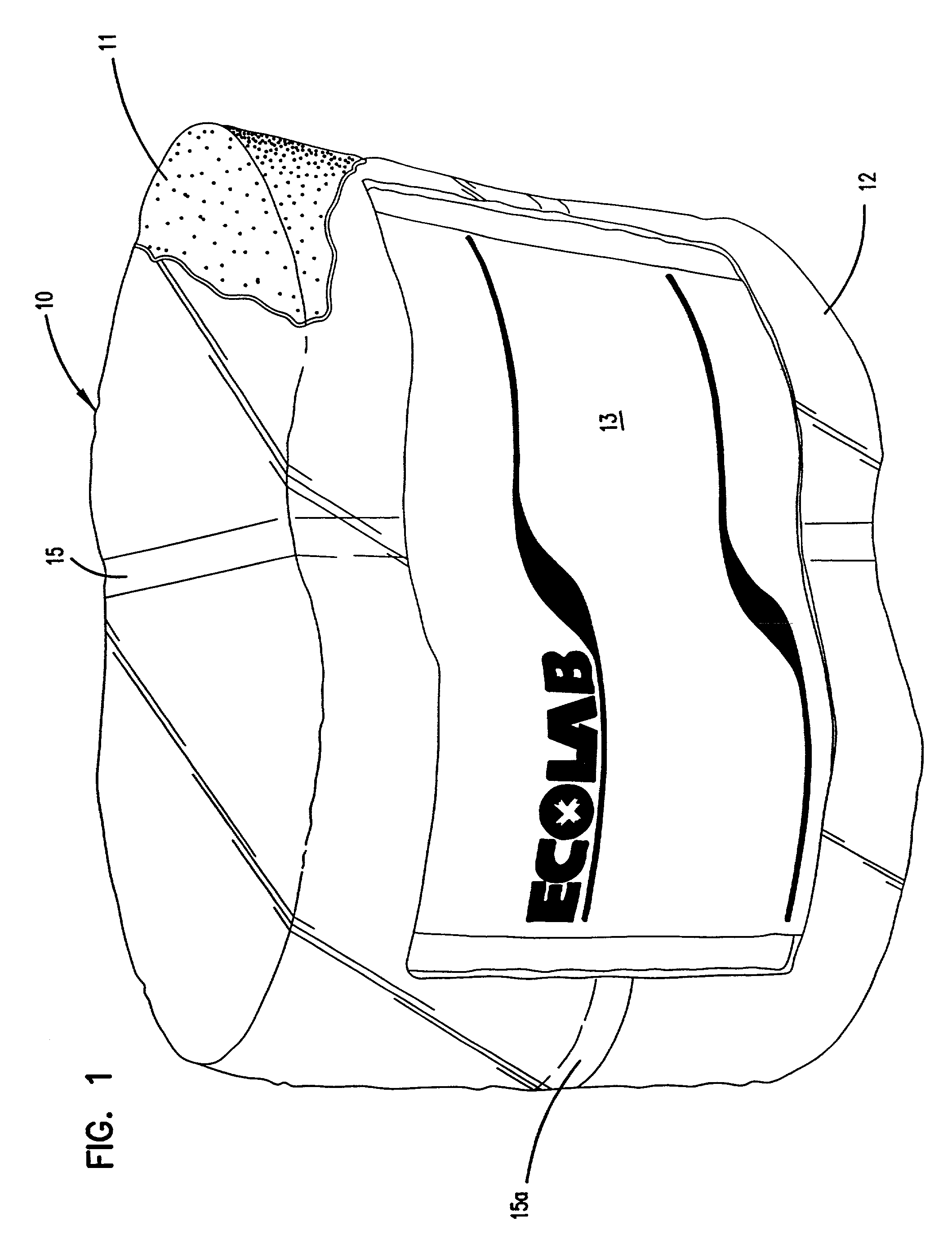Alkaline detergent containing mixed organic and inorganic sequestrants resulting in improved soil removal
a technology of organic and inorganic sequestrants and alkaline detergents, which is applied in the direction of detergent powders/flakes/sheets, detergent compounding agents, inorganic non-surface active detergent compositions, etc., can solve problems such as difficulty in soil removal, and achieve the effect of improving organic soil removal properties and softening water
- Summary
- Abstract
- Description
- Claims
- Application Information
AI Technical Summary
Benefits of technology
Problems solved by technology
Method used
Image
Examples
preparatory example
[0062] The experiment was run to determine the level of water needed to extrude a sodium carbonate product. The product of this example is a presoak but applies equally to a warewash detergent product. A liquid premix was made using water, nonyl phenol ethoxylate with 9.5 moles EO (NPE 9.5), a Direct Blue 86 dye, a fragrance and a Silicone Antifoam 544. These were mixed in a jacketed mix vessel equipped with a marine prop agitator. The temperature of this premix was held between 85-90.degree. F. to prevent gelling. The rest of the ingredients for this experiment were sodium tripolyphosphate, sodium carbonate, and LAS 90% flake which were all fed by separate powder feeders. These materials were all fed into a Teledyne 2" paste processor. Production rates for this experiment varied between 20 and 18 lbs / minute. The experiment was divided into five different sections, each; section had a different liquid premix feed rate, which reduced the amount of water in the formula. Product discha...
example 1
[0063] Carbonate compositions were prepared in extrusion processes similar to those in the Preparatory Example. A sodium carbonate based detergent (formula 1) was tested vs. a NaOH based detergent (formula 2). The compositions of these two formulas are listed in Table 1.
1 TABLE 1 Formula 1 Formula 2 (Alkalinity source) NaOH -- 45.6 Na.sub.2CO.sub.3 50.5 6.1 (Chelating / water STPP* 30.0 30.0 condition agent) Sodium 6.7 -- Aminotri- methylene Phosphonate Polyacrylic -- 1.6 Acid (Nonionic Defoamer) EO / PO Block 1.5 1.4 Polymer Defoamer (Detergency Nonionic 1.8 -- enhancing surfactant) (Other) Ash - 11% water Inerts Inerts S.P. >> [water] to 100 to 100 *Sodium Tripolyphosphate
[0064] (II) Test Procedures
[0065] A 10-cycle spot, film, protein, and lipstick removal test was used to compare formulas 1 and 2 under different test conditions. In this test procedure, three clean and five milk-coated Libbey glasses were washed in an institutional dish machine (a Hobart C-44) together with a lab soi...
example 2
[0071] In example 2, formula 1 was compared with formula 2 in the 10-cycle spot, film, protein, and lipstick removal test under 1500 ppm detergent, 2000 ppm food soil, and 5.5 grains city water conditions. The test results are listed in Table 3.
3 TABLE 3 Spots Film Protein Lipstick Formula 1 3.55 1.75 3.25 1.00 Formula 2 3.20 2.50 3.00 5.00
[0072] These test results show that under low water hardness and heavy soil conditions, higher detergent concentrations can be used to get good spot, film, and protein results that are comparable to those obtained in Example 1. Surprisingly, formula 1 outperformed formula 2 in lipstick removal.
PUM
| Property | Measurement | Unit |
|---|---|---|
| wt % | aaaaa | aaaaa |
| wt % | aaaaa | aaaaa |
| wt % | aaaaa | aaaaa |
Abstract
Description
Claims
Application Information
 Login to View More
Login to View More - R&D
- Intellectual Property
- Life Sciences
- Materials
- Tech Scout
- Unparalleled Data Quality
- Higher Quality Content
- 60% Fewer Hallucinations
Browse by: Latest US Patents, China's latest patents, Technical Efficacy Thesaurus, Application Domain, Technology Topic, Popular Technical Reports.
© 2025 PatSnap. All rights reserved.Legal|Privacy policy|Modern Slavery Act Transparency Statement|Sitemap|About US| Contact US: help@patsnap.com



